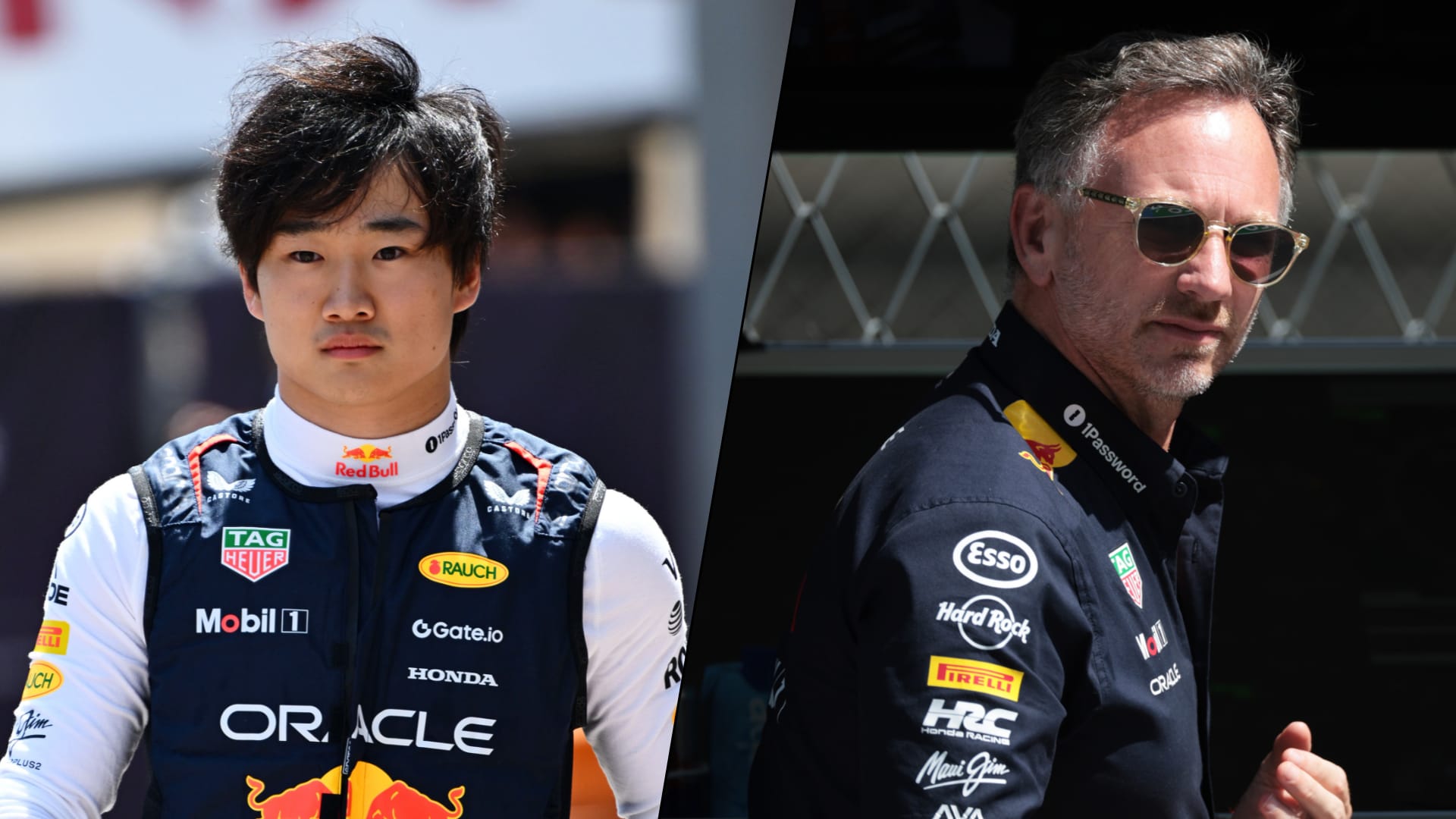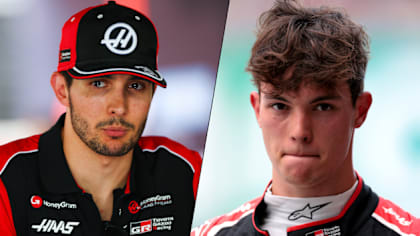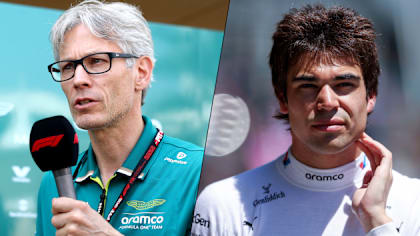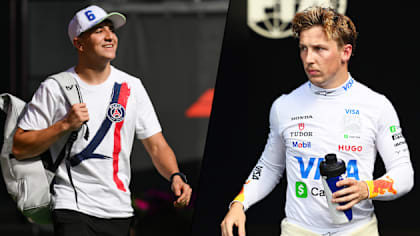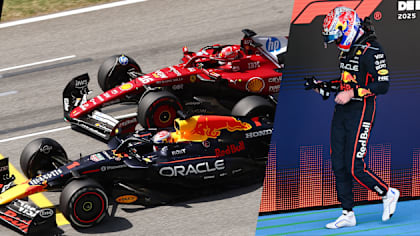
Feature
MONDAY MORNING DEBRIEF: Why nailing the strategy was so tough at the rain-shortened Japanese GP

Share

In a day of tough decisions for drivers and Race Control alike, it was perhaps the strategists who had the trickiest calls to make in a quick-fire shortened Japanese Grand Prix.
Once the race had restarted on mandated wet tyres behind the Safety Car following its red-flagging two laps into the original start, picking when to get onto intermediate tyres was always going to be the biggest decision up and down the pit lane.
Where you were in the pack played a decisive part in what was the best strategy. With the race scheduled to time out approximately 45 minutes after it was finally restarted, you were probably going to complete the race on the intermediates once you’d changed onto them from the extremes. So, there was likely going to be just a single stop – and when to make it was going to be make or break.
WATCH: Verstappen - The rise of a double world champion
Although a Safety Car start demands that everyone fit full wet tyres, it was obvious to the drivers as soon as they got under way that the track was going to be ready for intermediates very quickly. The wet weather tyre is very slow in any conditions other than deep standing water and so competitively the pressure is always to get onto the intermediate as soon as possible in conditions of a drying track.
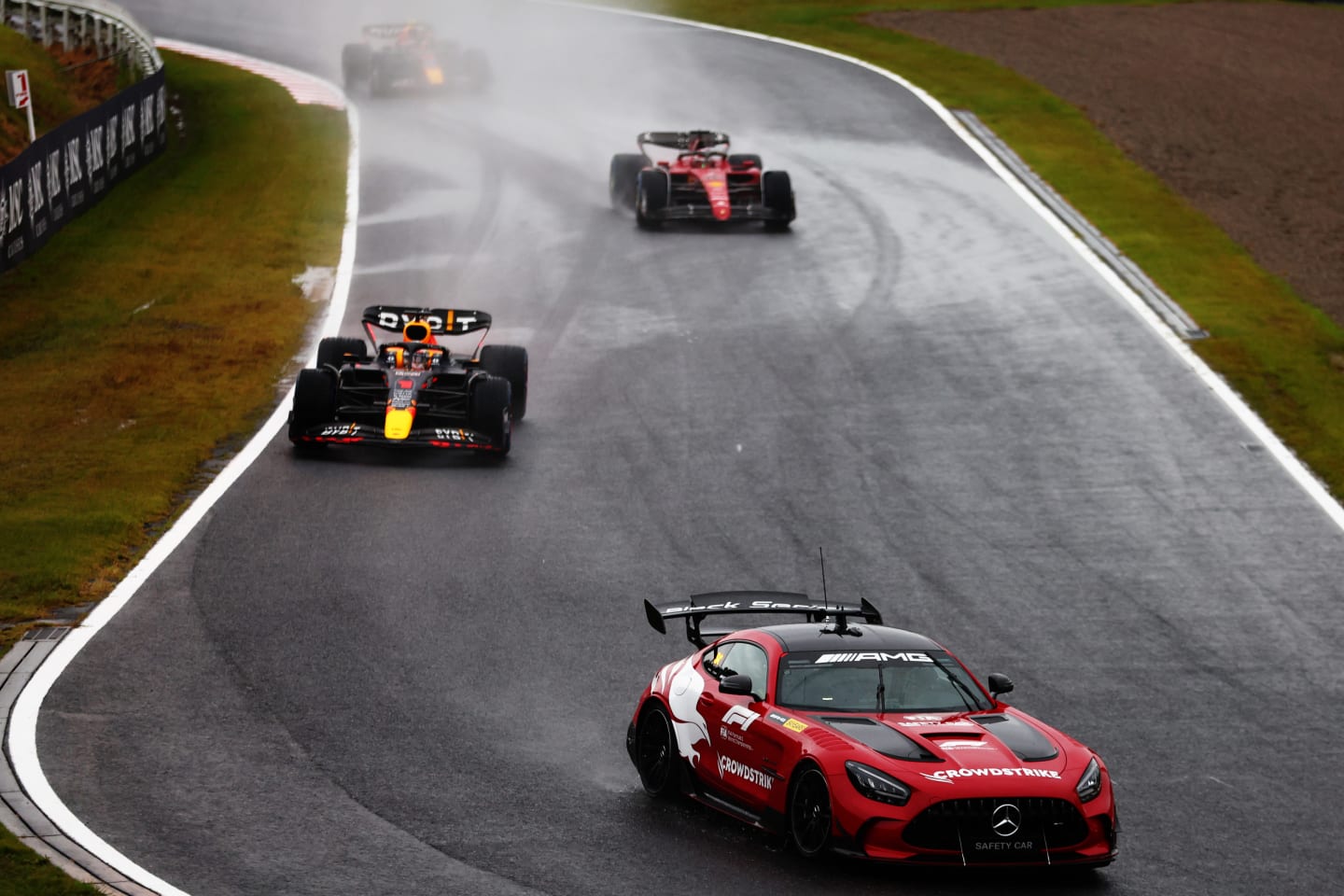
The race restarted behind the Safety Car, which helped clear some of the standing water
With 18 cars on full wets following the Safety Car, the worst of the standing water on the racing line was soon cleared, and as the Safety Car’s lights went out on the third lap, it was decision time. But it was complicated by the fact that the rain was still falling – and had even begun falling heavier at the far end of the lap, from the hairpin to Spoon and down the following straight.
The forecast was saying the rain was going to pass soon enough. But the risk – especially if you were up front – of coming in immediately for inters just as the rain increased was obvious. It could ruin your race either strategically, through an extra pit stop or being mired in the spray of slower traffic, or terminally, with your car in the barriers.
The decision was also one of game theory, in that what was right would also depend on what your opposition chose to do, something which cannot be called if you are ahead of them in the queue. So, in those laps behind the Safety Car, the drivers’ assessment was of huge significance to the pit wall call on whether to come in immediately for intermediate tyres which would possibly be whole seconds faster than the wets, or wait to see what the weather might be doing.
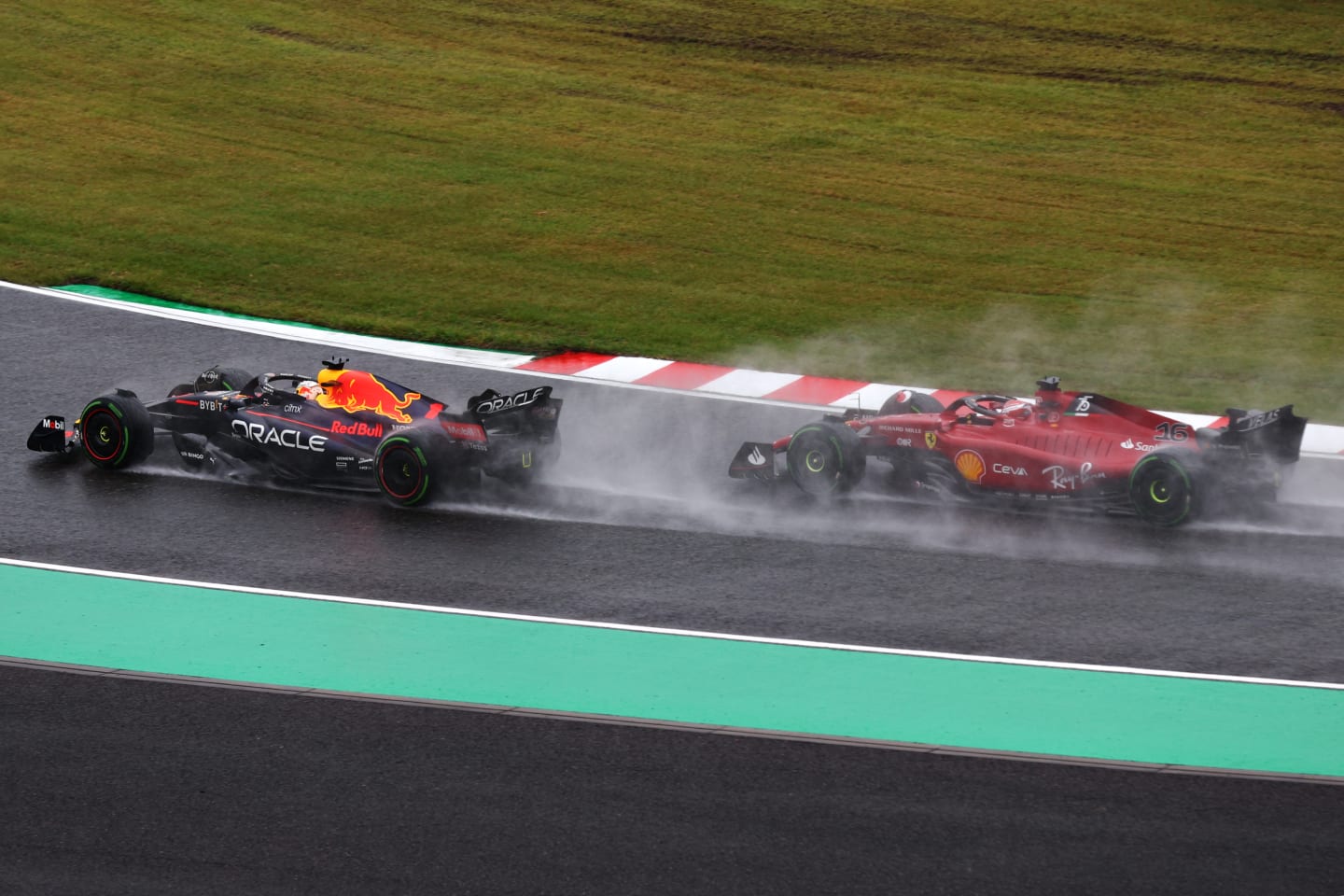
Verstappen was able to pull a gap on Leclerc that helped Red Bull strategically
It was the third lap behind the Safety Car when Verstappen reported, “I think it’s raining a bit more now isn’t it?”
“Not here on the pit wall,” came the reply.
“Feels like it to me here.”
READ MORE: Leclerc offers ‘huge congratulations’ to Verstappen as he reacts to time penalty
Similarly in the cockpit of Charles Leclerc’s Ferrari, circulating right behind Verstappen.
“So, rain intensity in the pits is the same as before but increasing in Sector 2,” he was informed.
“I don’t understand that now should be conditions where we could race,” he replied.
But that discussion was rendered moot as the Safety Car’s lights went out. The apparent increase in rainfall had decided it for Red Bull and Ferrari and they’d be staying out, together with almost everyone else. The pack was released with Verstappen at its head, Leclerc hard in his wheel tracks.
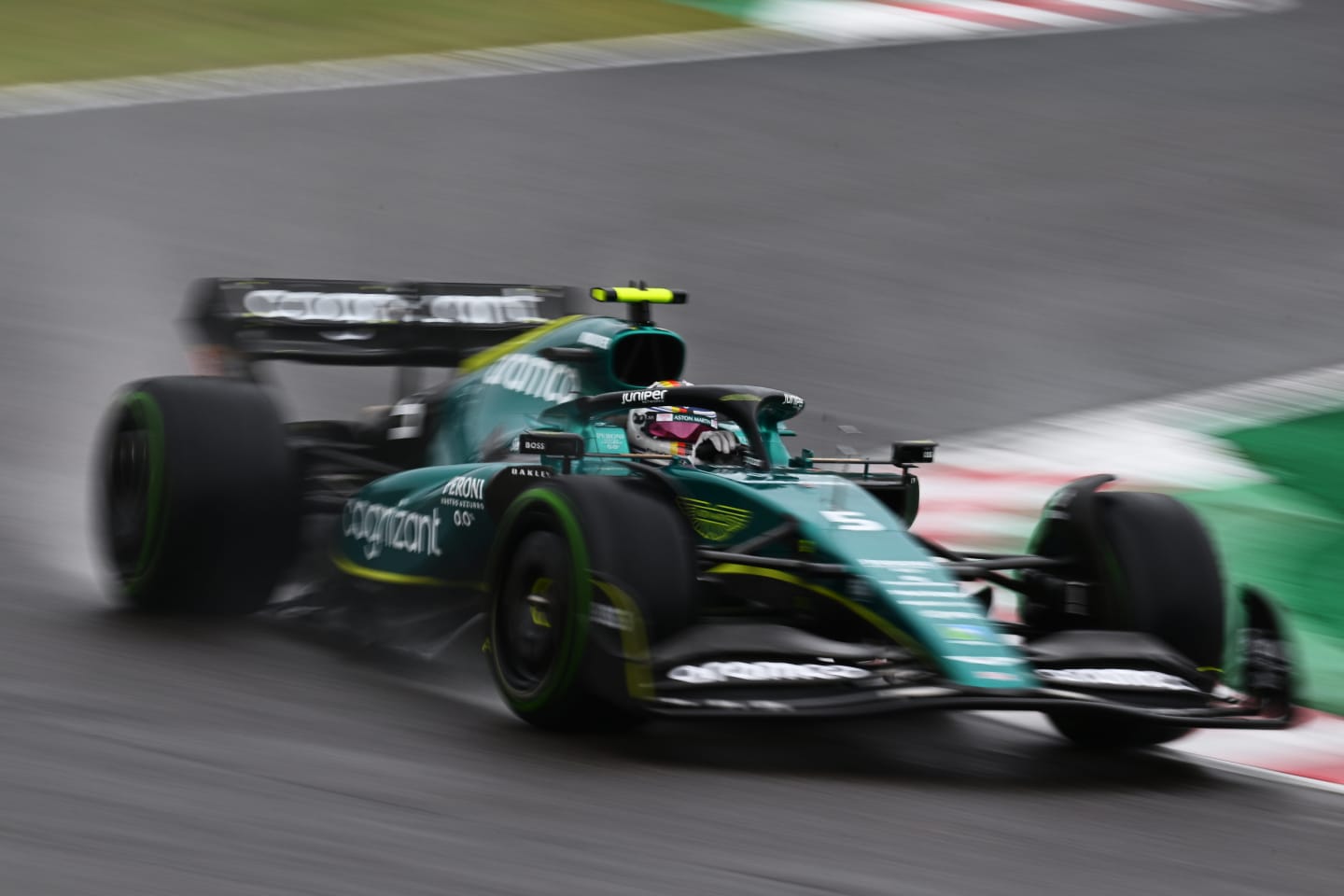
Vettel was one of the first to gamble and swap to inters
But further back, there was opportunity and far less to lose. Nicholas Latifi and Sebastian Vettel, in 15th and 16th respectively, clearly pre-planned to stop immediately. There was no revealing of their plans over the radio when behind the Safety Car: they simply followed the Safety Car into the pit lane and their teams were ready for them.
This proved to be a great strategy, in hindsight. Neither were particularly quick on their out-laps but as the rain reduced, Vettel’s sector times on his first flying lap suggested the inter was going to be around 4s faster than the wet. It vaulted both Latifi and Vettel up the order as most of the field stopped two laps later.
READ MORE: ‘He’s raised it to another level’ – Horner hails ‘truly, truly dominant’ Verstappen
Both Lando Norris and Valtteri Bottas came in a lap after Latifi/Vettel, before those two had begun going quickly. But running back in the spray, there seemed nothing to lose. “There’s a lot of spray,” reported Norris. “I’d go a lot quicker in clear air. I’m happy to give it a try. It’s better than just sitting here.” “They [Vettel and Latifi] are currently not going quicker but we could do it if you want,” his engineer replied. “You’d lose three positions.”
“Let’s do it.”

Norris also saw an opportunity to progress
This – Lap 6 – was actually probably the optimum time to make the stop in terms of matching the tyre to the state of the track. But in comparing it to the Vettel/Latifi timing, there wasn’t as much running in clear space and so the two factors offset each other.
Lap 7 was when nearly everyone – including Verstappen and Leclerc – came in. In hindsight it was probably a lap later than the optimum and had Leclerc been brought in on Lap 6 he would likely have undercut himself past Verstappen. But neither he nor the Ferrari pit wall seemed confident enough to try something with so much potential to be an expensive mistake.
In fact, he was almost left out even a further lap too long. “Box opposite of Verstappen,” he was told as he came through the chicane, which would have meant staying out as Verstappen came in a few seconds later. But at the last moment that call was overridden by an urgent, “Box, box, now,” as the implications of the Vettel and Norris times became clear.
Mercedes were kicking themselves that they didn’t bring in Hamilton from fourth place on Lap 6 – because if they had done so, not only would he have likely undercut Esteban Ocon ahead, but George Russell would not have needed to have been stacked behind him, as happened on Lap 7 when both Mercs were pitted. This lost Russell around 5s and dropped him several positions.
Red Bull also brought both their drivers in on the seventh lap, but such was the gap that Verstappen had already pulled out, Perez did not need to be stacked, so no time was lost there.

Verstappen clinched the win and with it, the title
Alpine faced the same dilemma as Mercedes, as Alonso was not far behind Ocon. But rather than stacking Alonso, it left him out the extra lap and brought him in on Lap 8. This proved less time-costly than Russell’s stacking.
Late in the race, another strategic intrigue became apparent. Zhou Guanyu, running towards the back and with nothing to lose, had made a stop for a second set of inters. These proved to be 4s faster than his old set. Alonso, unable to find a way by Vettel and being caught quickly by Russell, was brought in by Alpine once they’d seen Zhou’s times.
This worked well: within four laps Alonso had made up his pit stop time loss, passed Russell and put himself back on Vettel’s gearbox.
No one else ahead was in a position to do this, because they would have lost too many places – likely more than they could have recovered. Alonso dropped only two immediate places with the late second stop. If Leclerc, for example, had tried it at the same time, he’d have fallen from second to seventh.
All underlining that there was no ‘one size fits all’ correct strategy on this craziest of days.
YOU MIGHT ALSO LIKE
News Ocon hoping Haas can ‘get back where we belong’ in Canada as Bearman admits Spain ‘exposed a few weaknesses’
News Aston Martin's Krack provides more background on Stroll’s injury with ‘Plan A’ for Canadian to race on home soil
News Hadjar declares points run in Spain ‘a lot of fun’ as Racing Bulls team mate Lawson reflects on factor that ‘screwed’ him
FeatureF1 Unlocked MONDAY MORNING DEBRIEF: Verstappen made contact with Russell and Leclerc – but why were they racing each other in the first place?
